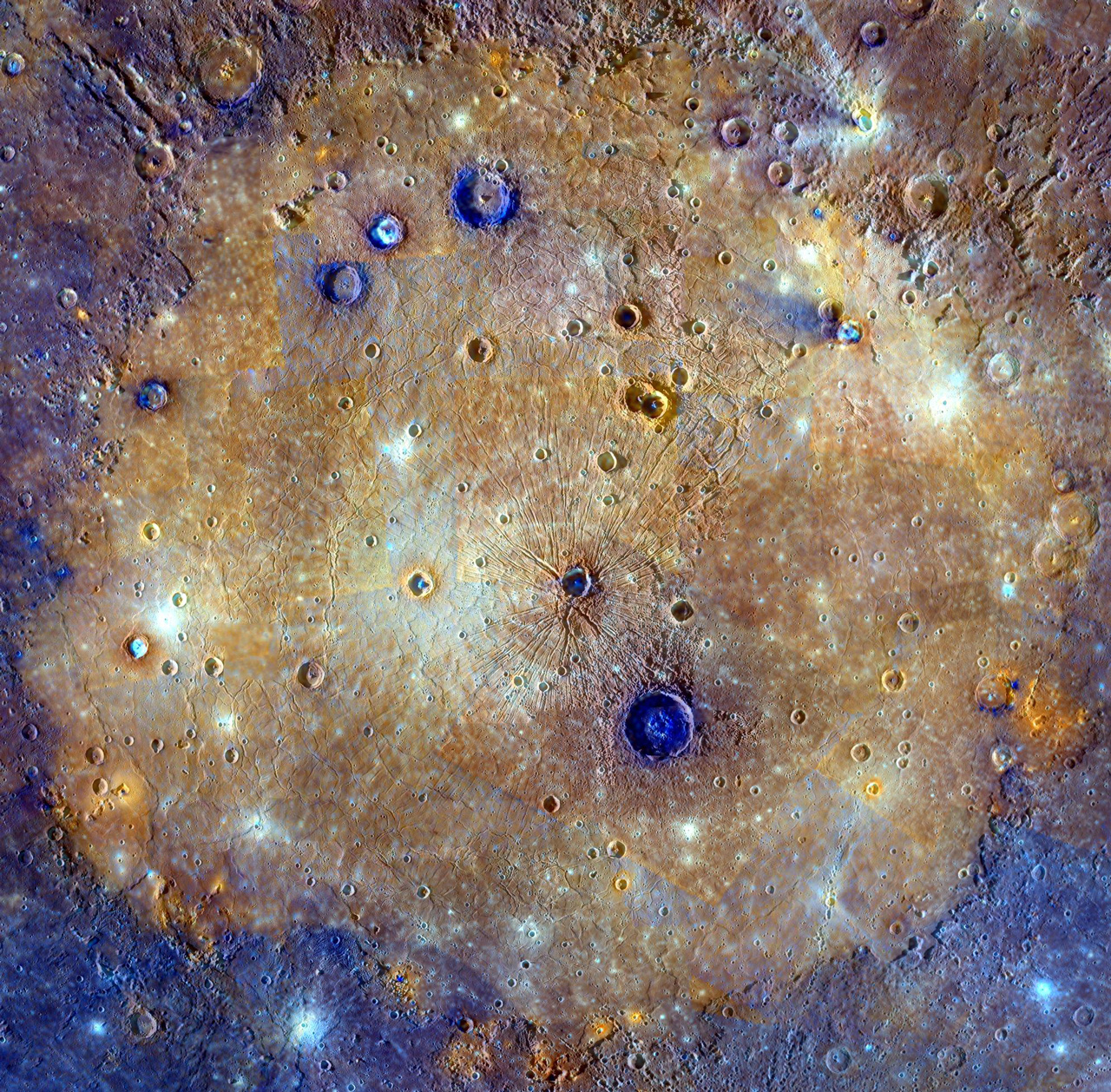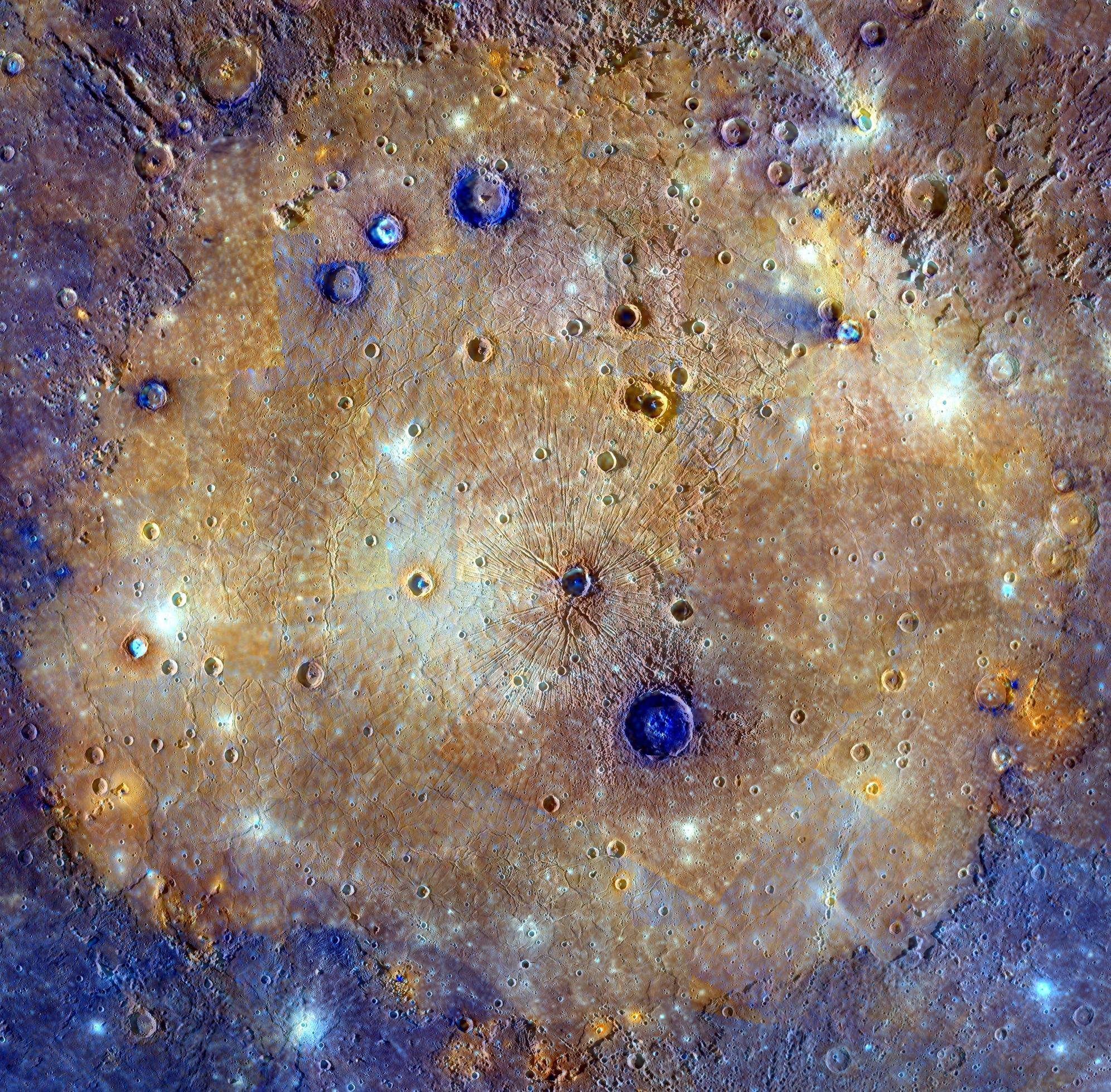Mercury’s Caloris Basin

| Credit | NASA/Johns Hopkins University Applied Physics Laboratory/Carnegie Institution of Washington |
|---|---|
| Historical Date | November 15, 2014 |
| PIA Number | PIA19216 |
| Language |
|
Mercury does not have a thick atmosphere to protect it from space debris. The small planet is riddled with craters, but none as spectacular as the Caloris Basin. “Basin” is what geologists call craters larger than about 186 miles (300 kilometers) in diameter. Caloris is about 950 miles (1,525 kilometers) across and is ringed by mile-high mountains.
For scale, the state of Texas is 773 miles (1,244 kilometers) wide from east to west.
Original Caption
This mosaic of Caloris basin is an enhanced-color composite overlain on a monochrome mosaic featured in a previous post. The color mosaic is made up of images obtained when both the spacecraft and the Sun were overhead, conditions best for discerning variations in brightness. The monochrome mosaic is made up of images obtained at off-vertical Sun angles (i.e., high incidence angles) and with visible shadows so as to reveal clearly the topographic form of geologic features.
The combination of the two datasets allows the correlation of geologic features with their color properties. In portions of the scene, color differences from image to image are apparent.
Caloris basin has been flooded by lava that appear orange in this mosaic. Post-flooding craters have excavated material from beneath the surface. The larger of these craters have exposed low-reflectance material (blue in this mosaic) from beneath the surface lavas, likely giving a glimpse of the original basin floor material.

